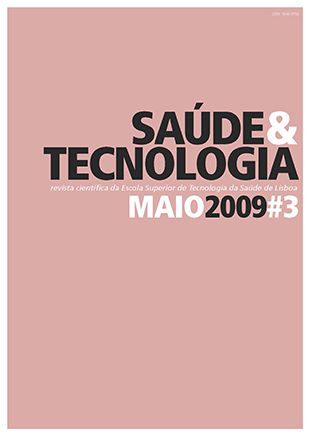Detection and quantification of genetically modified soy in foodstuffs, commercialized in Portugal, for human consumption
DOI:
https://doi.org/10.25758/set.214Keywords:
Detection, Quantification, Genetically modified soy, GMO, Real-time PCR, RT-PCRAbstract
Biotechnology allows plant and animal genetic modification, leading to genetically modified organisms (GMO). The GMO-related benefits and risks are still surrounded by controversy, the reason why the consumer has the right to decide about its consumption. The aim of this work is to detect and quantify genetically modified soy in foodstuffs. In that sense, 11 samples from two different lots of the same foodstuff’s brand, which contain soy, for human consumption were analysed. The real-time PCR method was used to detect and quantify transgenic DNA. From all the samples analysed, 7 were negative (63.6%) and 4 positives (36.4%) for the DNA detection from transgenic soy, corresponding to 3 foodstuffs: soy milk, flour, and granulated. The DNA quantities from transgenic soy vary from 0.07% (granulated soy) to 0.22% (soy flour), suggesting environmental contamination because they are below 0.4%.
Downloads
References
Herdt RW. Biotechnology in agriculture. Annu Rev Environ Resour. 2006;31:265-95.
World Health Organization. Biorisk management: laboratory biosecurity guidance [Internet]. Geneva: WHO; 2006 [cited 2008 Jun 20]. Available from: www.who.int/csr/resources/publications/biosafety/WHO_CDS_EPR_2006_6.pdf
Bertoni G, Marsan PA. Safety risks for animals fed genetic modified (GM) plants. Vet Res Commun. 2005 Aug;29 Suppl 2:13-8.
Davies KM. Genetic modification of plant metabolism for human health benefits. Mutat Res. 2007 Sep;622(1-2):122-37.
Celec P, Kukučková M, Renczésová V, Natarajan S, Pálffy R, Gardlík R, et al. Biological and biomedical aspects of genetically modified food. Biomed Pharmacother. 2005 Dec;59(10):531-40.
Liu B, Zeng Q, Ya F, Xu H, Xu C. Effects of transgenic plants on soil microorganisms. Plant Soil. 2005;271(1-2):1-13.
Uzogara SG. The impact of genetic modification of human foods in the 21st century: a review. Biotechnol Adv. 2000 May;18(3):179-206.
Haslberger AG. Need for an “Integrated Safety Assessment” of GMOs, linking food safety and environmental considerations. J Agric Food Chem. 2006 May;54(9):3173-80.
James C. Global status of commercialized biotech/GM crops: 2006. Ithaca, NY: ISAAA-International Service for the Acquisition of Agri-biotech Applications; 2006. ISBN 1-892456-40-0.
Rott ME, Lawrence TS, Wall EM, Green MJ. Detection and quantification of roundup ready soy in foods by conventional and real-time polymerase chain reaction. J Agric Food Chem. 2004 Aug;52(16):5223-32.
Harrigan GG, Ridley WP, Riordan SG, Nemeth MA, Sorbet R, Trujillo WA, et al. Chemical composition of glyphosate-tolerant soybean 40-3-2 grown in Europe remains equivalent with that of conventional soybean (Glycine max L.). J Agric Food Chem. 2007 Jul;55(15):6160-8.
Dalla Costa L, Martinelli L. Development of a real-time PCR method based on duplo target plasmids for determining an unexpected genetically modified soybean intermix with feed components. J Agric Food Chem. 2007 Feb;55(4):1264-73.
Giovannini T, Concilio L. PCR detection of genetically modified organisms: a review. Stärke. 2002;54(8):321-7.
Hübner P, Waiblinger HU, Pietsch K, Brodmann P. Validation of PCR methods for quantification of genetically modified plants in food. J AOAC Int. 2001 Nov/Dec;84(6):1855-64.
Tengel C, Schüssler P, Setzke E, Balles J, Sprenger-Haussels M. PCR-based detection of genetically modified soybean and maize in raw and highly processed foodstuffs. Biotechniques. 2001 Aug;31(2):426-9.
Di Bernardo G, Del Gaudio S, Galderisi U, Cascino A, Cipollaro M. Comparative evaluation of different DNA extraction procedures from food samples. Biotechnol Prog. 2007 Mar-Apr;23(2):297-301.
Anklam E, Gadani F, Heinze P, Pijnenburg H, Van Den Eede G. Analytical methods for detection and determination of genetically modified organisms in agricultural crops and plant-derived food products. Eur Food Res Technol. 2002 Jan;214(1):3-26.
Ahmed FE. Detection of genetically modified organisms in foods. Trends Biotechnol. 2002 May;20(5):215-23.
Clark EA. Environmental risks of genetic engineering. Euphytica. 2006 Mar;148(1-2):47-60.
Levidow L, Boschert K. Coexistence or contradiction? GM crops versus alternative agricultures in Europe. Geoforum. 2008 Jan;39(1):174-90.
Downloads
Published
Issue
Section
License
Copyright (c) 2023 Saúde e Tecnologia

This work is licensed under a Creative Commons Attribution-NonCommercial-NoDerivatives 4.0 International License.
The journal Saúde & Tecnologia offers immediate free access to its content, following the principle that making scientific knowledge available to the public free of charge provides greater worldwide democratization of knowledge.
The journal Saúde & Tecnologia does not charge authors any submission or article processing charges (APC).
All content is licensed under a Creative Commons CC-BY-NC-ND license. Authors have the right to: reproduce their work in physical or digital form for personal, professional, or teaching use, but not for commercial use (including the sale of the right to access the article); deposit on their website, that of their institution or in a repository an exact copy in electronic format of the article published by Saúde & Tecnologia, provided that reference is made to its publication in Saúde & Tecnologia and its content (including symbols identifying the journal) is not altered; publish in a book of which they are authors or editors the total or partial content of the manuscript, provided that reference is made to its publication in Saúde & Tecnologia.







